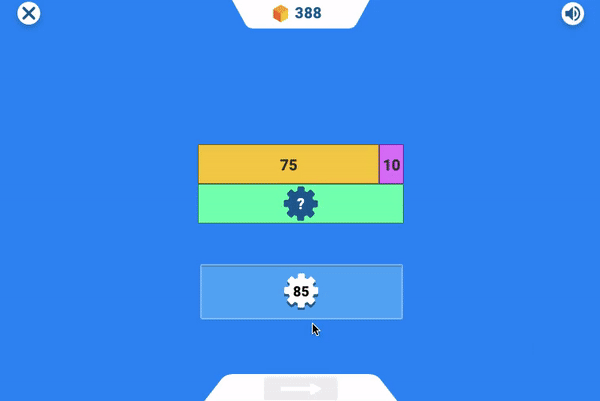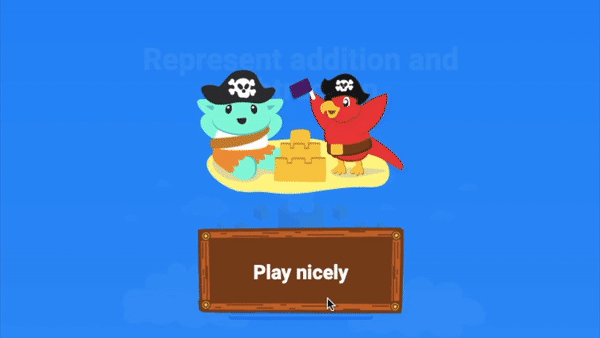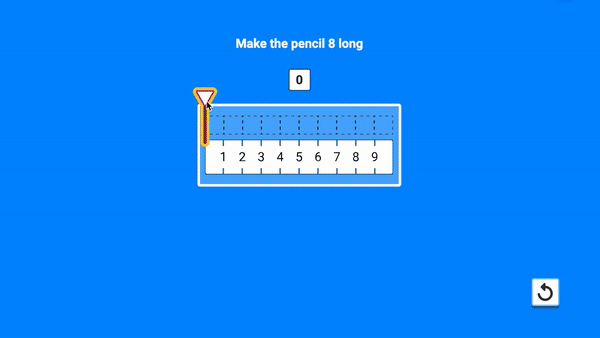By Wendy Verdaasdonk
A Deep Dive Into the New Elementary School Activities
This year, we have been working hard to develop fun and engaging math activities for elementary school students. And all this has paid off, as Mangahigh now has extensive coverage of Common Core standards for elementary schools. We’d love to take you on a deep dive through the content and show the thinking behind it, as it’s been created with the latest educational philosophies you might use in your own teaching strategies.
Watch the short video below to get a look inside our latest content, while our Content Director explains more about the thinking behind it.
Finding the ‘fun’ in ‘functional’
Our motto is ‘where every child finds fun in learning’, so we really put fun at the heart of this content. We created activities that are grounded in sound educational theories and are attractive and engaging for students at the same time. By introducing interactive game mechanics, the students keep engaged throughout the various concepts. They can visibly see when they are progressing through the activities and are constantly encouraged to keep learning by our newest characters.

The challenges of creating for a young audience
Ages 5-7 are challenging years to create digital content for. Children at this age are also developing their literacy skills, so we need to separate these skills from their numeracy journey. They also learn best by interacting with physical objects, or manipulatives. These are all factors that we needed to keep in consideration. Our content team has worked hard on solutions to overcome these hurdles and create digital content that fits the audience perfectly.
Paul Carter, Mangahigh’s Content Director: “One of the hardest things about building this new content was making it relevant for children this age. It’s a difficult market to work for because they are at such a vital stage of their development and mathematical careers. We really needed to produce something that was meaningful to them and something they could understand and work with very easily. By rendering familiar physical mathematical tools in a digital format and housing them in a gamified ecosystem, we managed to create a digital workspace that the students would understand immediately, are engaged with and will enjoy using to learn mathematics.”
As you can see, a smart design is a big part of these solutions. The clean and intuitive interface makes it possible for these young students to complete our activities independently and without distractions.
Paul: “Design-wise, one of the most difficult things was actually to recreate the concrete manipulatives that everyone is so familiar with. These are the tools that help students better understand the mathematical concepts that they are working with at that age. The result after a lot of work from our designers is a game-like atmosphere that mimics these manipulatives so well that they’re as good as the real thing.”
![]()
Facing and overcoming math anxiety
Because these young students are only just starting with their mathematical journey, we wanted them to feel confident from the very beginning. Math anxiety is unfortunately very common at an elementary age, with children deciding whether they can “do” math by age 8. This made it a key topic to consider while creating this new content.
Jess Holdgate, a Content Designer here at Mangahigh: “We wanted to make the Mangahigh experience not only about learning mathematics, but we also wanted to help children build resilience, increase their confidence and promote a healthy wellbeing.”
The solution started with the design of our newest Mangahigh characters, which were created to have a friendly look and are now the face of our offering for the youngest students. Their friendly design and motivational messages encourage the students to keep trying and celebrate their successes.
Jess: “We created a range of engaging screens throughout the activities to highlight progress. These are small breaks from the questions, in which students are encouraged and praised. Focussing on positive messaging and pairing this with a fun and friendly character helps to create support for the student which in turn helps to combat math anxiety. The screens create a moment to pause and recharge before continuing with the rest of the activity.”

Building traditional teaching strategies digitally
We wanted the new content to be familiar not only to students but also to the teachers who will work with it. To you as a teacher, it should feel like a way of teaching that you already know, albeit a little revamped. This is why we have incorporated sound pedagogical theories such as the well-known Concrete-Pictorial-Abstract (CPA) theory into the content.
Multiple representations help students understand mathematical concepts by building on concepts they already know. The new activities build on the CPA approach, but they go one step further into Application (CPAA). In this step, math is made relevant to everyday life through solving real-world problems.

Paul: “We needed the content to be recognisable for teachers. As a former teacher myself, I would want to use a system that resonates with the way of teaching that I’m used to. This way, it’s much easier to pick up, understand and apply in everyday lessons.”
Engagement by interaction
As mentioned in the introduction, student engagement is one of the core components we worked on while developing these activities. One way to achieve this was by creating game-like interactions that students complete while learning their every-day mathematical concepts. A couple of examples are a measure slider, a tally chart and bar models. Sliding, tapping and dragging provide variety in the activities which keep the student’s attention.
Tallies, tables, and pictograms were used as the building blocks and gave the basis to designing for mathematical data in an engaging way. Providing a variety of methods with different interactions allows students to engage proactively with data to learn the same concept in different ways; where one method may be challenging to student A, that same method will prove to be a cognitive success to student B. Using these different types of learning in the same activity gives a higher likelihood of students successfully understanding the mathematical concepts.

Jess: “Since game-based learning is a core part of Mangahigh, we wanted to create activities that followed these principles. This way, students will keep engaged throughout the activities and take more satisfaction out of simply doing their homework. Designing these new interactions in the activities was challenging, but the design team is proud of the result. We believe these new interactions will help students understand mathematical concepts better while providing a fun learning experience.”
Let us know what you think!
We could continue talking about our new elementary activities forever, but what’s more important is what you think! Are there any activities that are a real hit with your younger learners? Let us know your thoughts; your feedback is really important to us!